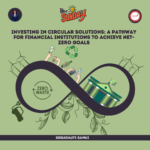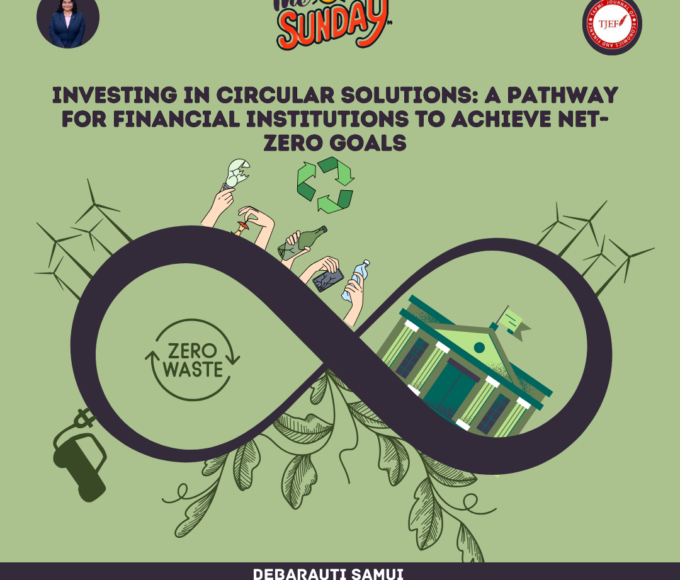
World food systems refer to the network of activities and processes involved in producing, distributing, and consuming food globally. The economics of agriculture plays a crucial role in these systems, as agriculture is the primary source of food production.
Agriculture is both a business and a way of life for many people around the world. It is an essential economic sector that contributes to national income and employment, particularly in rural areas. The economics of agriculture encompasses various aspects, including production, trade, consumption, and government policies.
Certainly, here’s a more analytical elaboration of the economics of agriculture:
Production: The production of agricultural goods involves various inputs, including land, labor, capital, and technology. The efficiency of these inputs determines the output and profitability of agricultural activities. For example, technological advancements in agriculture can increase productivity, which can lead to lower production costs and higher profits. Similarly, changes in land use policies, such as government incentives to encourage sustainable practices or land conservation, can impact agricultural production.
Trade: Agricultural products are traded globally, and the price of these commodities is subject to fluctuations due to changes in demand and supply. International trade policies, such as tariffs and subsidies, can impact the price and availability of agricultural products in domestic markets. Trade agreements can also have significant impacts on agricultural economies, particularly for developing countries that rely on agricultural exports.
Consumption: The consumption of agricultural goods is influenced by various factors, including cultural preferences, dietary habits, and income levels. For example, the demand for organic or locally-grown foods may be higher in certain regions or among specific consumer groups. The affordability and availability of food can also impact consumption patterns, particularly in low-income communities.
Government policies: Government policies related to agriculture can significantly impact the economics of the sector. Policies related to land use, subsidies, tariffs, and trade agreements can influence the production, distribution, and consumption of food. For example, subsidies for certain crops can incentivize overproduction, which can lead to market surpluses and lower prices. On the other hand, tariffs can protect domestic producers from foreign competition but can also raise prices for consumers.
Environmental sustainability: The economics of agriculture must also consider the environmental impacts of agricultural production. Practices such as monoculture farming, overuse of pesticides and fertilizers, and deforestation can have negative impacts on the environment, including soil degradation, water pollution, and biodiversity loss. The economic impacts of these practices can be significant, including reduced crop yields, higher input costs, and increased health risks.
How do we feed today’s world?
Feeding today’s world is a complex challenge that involves various factors such as population growth, climate change, limited resources, and changing dietary preferences. Here are some ways in which we currently feed the world:
Agriculture: Agriculture is the backbone of our food system, and it involves the production of crops and livestock for human consumption. Advances in technology and farming practices have enabled farmers to produce more food with fewer resources.
Distribution and supply chain: A global network of transportation, storage, and distribution channels ensures that food is available in different parts of the world. This involves coordination among farmers, processors, distributors, retailers, and consumers.
Food processing: Food processing plays a critical role in making food safer, more nutritious, and easier to store and transport. It involves transforming raw agricultural products into packaged foods that can be consumed by people.
Food waste reduction: A significant portion of food produced is lost or wasted due to various factors such as spoilage, overproduction, and inefficient supply chains. Addressing food waste can help ensure that the food produced is utilized efficiently.
Sustainable food systems: As the world’s population continues to grow, it is important to ensure that food production and consumption are sustainable. This involves adopting practices that reduce the impact of agriculture on the environment, promote biodiversity, and ensure that future generations have access to nutritious food.
Overall, feeding today’s world requires a multi-faceted approach that takes into account various factors such as technology, sustainability, and social equity.
What is the government doing?
Governments have historically provided significant support to their food, agriculture, and fisheries sectors to ensure an adequate level of farmer income and sufficient and affordable food supplies for their populations. However, governments now aim to achieve a wider range of objectives, such as promoting competitive and innovative industries and environmentally sustainable production systems that are more resilient to climate change and other risks. These objectives vary in importance depending on each country’s individual circumstances, with developed countries often prioritizing environmental sustainability and developing countries focusing on promoting economic growth and employment.
Governments utilize various policy instruments, including price support mechanisms, input subsidies, crop insurance, research and development, infrastructure development, trade policies, and environmental policies, to achieve their goals. These policies aim to stimulate production and raise incomes by lowering input costs and raising output prices while keeping domestic food prices low, especially for the poorest.
It is important to design policy interventions carefully to avoid negative consequences, such as market distortions or environmental impacts, while still achieving desired outcomes.
Current policies are not always well aligned with these developing objectives.
Policies currently in place may not always be in line with the changing goals for the food, agriculture, and fisheries sectors. As objectives evolve to include a wider range of factors, such as environmental sustainability and economic competitiveness, policies need to be adapted to ensure they are effectively promoting these new goals. Without appropriate adjustments, existing policies may not be effective in achieving the desired outcomes or may even hinder progress toward these evolving objectives.
The OECD oversees and assesses agricultural policies in 53 countries that collectively provide over $500 billion in support to their agricultural sectors each year. The majority of this support, over 75%, goes directly to farmers, while the rest is allocated to public investment in agricultural innovation systems, food safety and quality inspection systems, and physical infrastructure. However, there are significant variations in the extent and nature of agricultural support across different countries.

Fig 1: Disaggregated producer support estimates
In recent decades, many countries have decreased the level of support they provide to farmers, and this support has become more disconnected from production. Instead, it now focuses on environmental outcomes and better risk management tools. However, some developed countries still provide high levels of support, while some emerging economies have increased their support, albeit from low or even negative levels.
Compared to agriculture, governments provide less overall support to the fisheries sector, but it still constitutes a substantial amount. Fisheries support includes investments in port infrastructure, monitoring and control, as well as payments to individual fishers for vessel modernization. Tax exemptions and subsidies for fuel use are also common, sometimes specifically targeted at the fisheries sector and sometimes as part of broader support programs. In 2016, total support specifically targeted to fisheries across all OECD countries included in the Fisheries Support Estimate database was nearly $3 billion.
The policy measures used by governments affect production, trade, and other outcomes differently
Certain policies are more effective than others in achieving specific objectives. For instance, investing in agricultural innovation and inspection services is a good way to promote sustainable agricultural productivity growth. Payments to farmers can also be targeted towards specific policy objectives, such as improving environmental performance, by attaching conditions or targeting certain groups of farms. However, policies like artificially raising domestic prices or providing output and input subsidies can distort production decisions and trade flows, have negative impacts on the environment, and potentially harm the welfare, resilience, and food security of consumers and producers. In some cases, policies are motivated by food security concerns, but they may disproportionately hurt vulnerable households and small farmers. Similarly, public stockholding programs may shield consumers from food price spikes, but they can also have unintended impacts on markets and increase price volatility.

Fig 2: Effects of Policies used
Public support can be better aligned with the opportunities and challenges facing the sector
Meeting the increasing demand for food, agriculture, and fisheries products sustainably while adapting to a changing climate presents both opportunities and challenges. To address income goals, and risks, and improve productivity in an environmentally sustainable way, policies are evolving, becoming more targeted and less market-distorting. However, agro-food products still face higher tariffs and non-tariff measures due to domestic regulations. International agreements, such as the 1994 Agreement on Agriculture, have played an important role in addressing these issues, but progress in negotiations remains slow. To align policies with the needs of the sector, governments must distinguish between income support and productivity, sustainability, and resilience. A more integrated approach is necessary, ensuring policy packages are coherent with economy-wide measures and responsive to the needs of the entire food system. The OECD provides data, analysis, and advice to support governments in improving their policy performance.
Opportunities and threats to food systems
Opportunities include the development of more targeted and less market-distorting policies aimed at improving productivity in environmentally sustainable ways. External pressure from international agreements can also play an important role in aligning policies with emerging needs in the sector. Opportunities for food systems include:
Increasing demand: The global population is projected to reach 9.7 billion by 2050, which will lead to an increased demand for food. This presents an opportunity for food systems to expand and innovate to meet this demand.
Technological advancements: Advancements in technology, such as precision agriculture and gene editing, offer opportunities to improve efficiency and productivity in the food system.
Sustainable practices: Consumers are increasingly aware of the environmental impact of food production and are seeking out more sustainable options. This presents an opportunity for food systems to adopt more sustainable practices and meet the demands of environmentally conscious consumers.
Collaboration: Collaboration between different actors in the food system, such as farmers, processors, distributors, retailers, and policymakers, can lead to more efficient and sustainable food systems.
On the other hand, there are also numerous threats to food systems. Climate change is one of the biggest threats, as it can lead to droughts, floods, and other extreme weather events that can damage crops and reduce yields. There is also increasing pressure on natural resources, such as water and land, due to population growth and urbanization. Additionally, food systems are vulnerable to shocks and disruptions, such as pandemics or trade disputes, which can lead to food shortages and price volatility. Threats to food systems include:
Climate change: Climate change can lead to more frequent extreme weather events, such as floods and droughts, which can disrupt food production and supply chains.
Land degradation: Land degradation can lead to reduced soil fertility and productivity, which can impact food production.
Water scarcity: Water scarcity can limit agricultural production in certain regions, which can impact the global food supply.
Food waste: Food waste is a major issue in the food system, with an estimated one-third of all food produced is wasted. This not only has economic and social impacts but also contributes to environmental problems, such as greenhouse gas emissions.
Conflict and instability: Conflict and instability can disrupt food production and supply chains, leading to food insecurity for millions of people.
What is the future of food and farming?
The future of food and farming is both promising and challenging. On the one hand, there is the potential for technological innovation and advancements in agricultural practices to increase productivity and improve sustainability. For example, precision agriculture technologies, such as sensors and drones, can help farmers optimize their use of resources like water and fertilizer, while genetic engineering and other biotechnologies may help create more resilient crops and livestock. Furthermore, the integration of digital technologies in the food system, from farm to table, could enable greater transparency and traceability, improving food safety and quality.
On the other hand, the future of food and farming also faces significant challenges. Climate change is expected to exacerbate existing pressures on food systems, including drought, floods, and other extreme weather events. This will require new approaches to agriculture, including changes in crop and livestock management, as well as investment in new technologies that can help mitigate the impacts of climate change. Additionally, increasing demands for food due to population growth and rising incomes, particularly in developing countries, will require new approaches to food production and distribution, such as reducing food waste, improving supply chain efficiency, and promoting sustainable diets.
Moreover, the COVID-19 pandemic has exposed vulnerabilities in the global food system, particularly in terms of food security and the resilience of supply chains. The pandemic has highlighted the need for greater investment in local and regional food systems, as well as improved access to technology and resources for smallholder farmers.
In summary, the future of food and farming is likely to be shaped by a range of factors, including climate change, technological innovation, changing consumer preferences, and policy responses. While there are significant challenges to be addressed, there are also opportunities for innovation and collaboration to create more sustainable and resilient food systems that meet the needs of a growing global population.
-TJEF Editor
Prachi

















Leave a comment